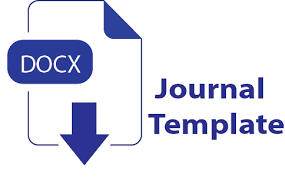Pengaruh Kepemimpinan, Komunikasi, Motivasi terhadap Kinerja
Influence of Leadership, Communication, and Motivation on Performance
DOI:
https://doi.org/10.38215/jutek.v1i1.24Abstract
The method employed in this research are survey descriptive and survey explanatory, that
measured the relation and effect among research variables dan study the hypotesis which
have been formulated first. Data analysis used path analysis, and the model of this path
diagram shall always use a double headed arrow to denote a correlation, indicating the
symmetrical nature of a correlation. In tracing the paths of a diagram, a double-headed
curve may be used in either direction (from leadership to communication, or from
communication to leadership). Leadership and communication contributes to the the
determination of work motivation, and work motivation gives to the determination of
employee’s performance.
Research findings shows that the total effect of leadership, communication and work
motivation on employees’ performance accounts for 0,563, and statistically significant. The
direct effect of other variable on employees’ peformance account for 0,437, the result
0,437says that the effect of other variabel on employees’ performance is moderate. These
variable was not investigated in this research, but theoretecally influenced employees’
performance, that is ability of leader to achieve superior performance. The effect of
leadership to motivation account for 0,442, and the influence of communication to
motivation account for 0,517. Both of path coefficient from leadership and communication
to motivation statistically significant.Beside leadership and communication which
influenced motivation the others variable that affected motivation are the employees
involving in decision making process,and job satisfaction. These variable account for
0,483, the result 0,483 says that thr effect on motivation is moderate.The leadership and
communication corelation statistically significant
Downloads
References
Rosdakarya.Bandung..
Daniels D Tom.1997,Perspectives on Organizational Communication Fourth dition. United State America.Mc Graw Hill.
Gordon R Yudith.1990. Management and Organizational Behavior.United State America. Allyn and Bacon.
Luthans,Fred. Perilaku Organisasi,edisi 10.Yogyakarta.AndiPace,R.Wayne & Faules
DonF.2006.
Komunikasi Organisasi.Bandung.PT.Remaja Rosdakarya.
Robbins, P Stephen. Perilaku Organisasi,edisi 12 Jilid 1&2.Gramedia.Jakarta.
Sedarmayanti.2001. Sumber Daya Manusia Dan Produktivitas Kerja.Bandung.Mandar Maju.
Sihoting.2007.Manajemen Sumber Daya Manusia. Jakarta.Pradnya Paramita.
Sugiyono.2008. Metodologi Penelitian Bisnis..Alfabeth .Bandung.
Tangkilans,Hessel Nogi S.Kebijakan dan manajemen Otonomi Daerah. Yogyakarta.Lukman Ofset.
Umar,Husen.2008. Desain PenelitianMSDM dan Perilaku Karyawan.Jakarta.PT Raja Grafindo.
Vroom VictorH & Deci.Edward.L.1983. Managemen and Motivation.Kingsport Press USA.
Yayat,Hayati Jatmiko.2005. Perilaku Organisasi.Bandung.Alfabeta.
Downloads
Published
Issue
Section
License
Authors who publish articles in Jurnal Teras Kesehatan agree to the following terms:
- Authors retain copyright of the article and grant the journal the right of first publication with the work simultaneously licensed under a CC-BY-SA or the Creative Commons Attribution–ShareAlike License.
- Authors can enter into separate, additional contractual arrangements for the non-exclusive distribution of the journal's published version of the work (e.g., post it to an institutional repository or publish it in a book), with an acknowledgment of its initial publication in this journal.
Authors are permitted and encouraged to post their work online (e.g., in institutional repositories or on their website) prior to and during the submission process, as it can lead to productive exchanges, as well as earlier and greater citation of published work (See The Effect of Open Access)












